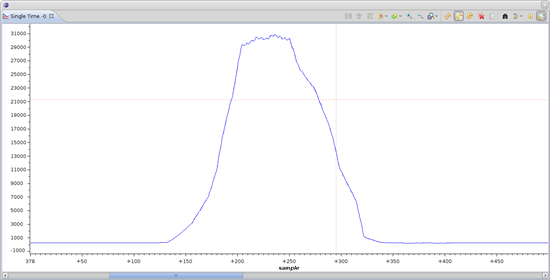Hi,
We are using THS4131 to convert single ended signal to differential signal to drive ADC ADS8363 (EVM). We have connected positive and negative supplies (+5v, -5v). The Vocm is not connected.
We see half the input signal on Vo+ and Vo- outputs.
For the ADC we have Ao+ to Vo+ and Ao- to Vo-. Vref is connected to 2.5v.
When we connect the input signal that varies from 0-5V, we see 2.5 to 5V after the ADC (samples are from 0 to 32767 instead of -32768 to 32767).
How can we get the full range?
Best Regards,
Basu



